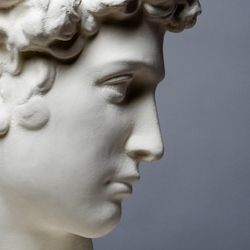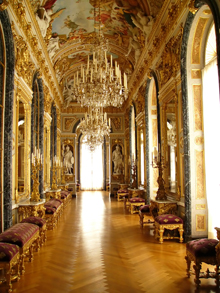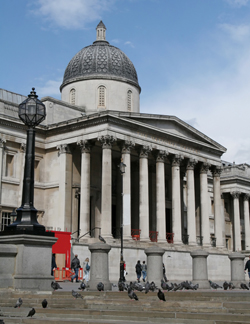 |
| Museums facing growing security challenge with rise of armed robbery |
It only takes a shocking 58 seconds to steal a painting. Jonas Rehnberg, writer at Assa Abloy Future labs, speaks to former museum security chief Ton Cremers about the safe-keeping of precious artefacts in museums and art galleries.
In 2004, armed, masked robbers stormed into the Munch Museum in Oslo and stole two masterpieces - "The Scream" and "Madonna" - before the eyes of shocked spectators. As a result, the museum closed for nearly a year to update its security measures.
"Protecting priceless objects is a particularly tough challenge for public museums and galleries. These institutions face the conflicting dilemma of keeping objects safe, yet allowing millions of visitors a chance to see them," says Ton Cremers, a former security manager at Amsterdam's Rijksmuseum for 15 years.
"A private collector of valuable cultural objects can obviously store the treasures in a strong vault, he doesn't tell people about them and, above all, does not allow total strangers to enter and admire the collection," he says. "Museums, on the other hand, have to do just the opposite. The goal of museum security is not to close its doors but to make sure they are opened to visitors in a responsible manner."
Security systems must start from the roof
"Alarm systems must be attached to a building's outer shell, windows, doors, and on all levels of a building, since experience shows that fifty percent of all thefts take place on the upper floors of a building, or even from the roof. Security measures should not be limited to motion detection inside the building,"Cremers remarks.
"The goal of museum security is not to close its doors but to make sure they are opened to visitors in a responsible manner" |
"If permitted by the surrounding environment, it is ideal to have a security system that detects intruders as they are approaching the building. Use CCTV cameras with motion detection, infrared detection, or a laser system that continuously scans the outside premises."
Cremers points out that these systems need a lot of maintenance, as the security cameras and scanners used need to be cleaned regularly to prevent false alarms. The fact that many art galleries and museums are housed in historic buildings adds to the complexity of installing adequate security. If a building's construction prevents an upgrade to top-notch, hi-tech devices, security needs to be introduced via internal burglar-resistant compartments. "This requires a lot of creativity and tailor-made solutions," Cremers notes.
 |
| The fact that many galleries are housed in historic buildings adds to the complexity of installing adequate security |
How and where different objects are displayed inside the museum should also be a part of security planning. The most precious objects should never be placed near the outer shell of a building, a lesson painfully learned by the Kunsthistorisches Museum in Vienna a few years ago, when the famous Cellini Salt Cellar was stolen. The theft of this valuable table sculpture, estimated at 30 million euro, took only 58 seconds. At the time, scaffolding was erected outside the building. The thief climbed the scaffolds, then smashed a window and a display case containing the piece.
"There was an alarm system attached to the windows, but no alarm response organisation will be quick enough to react adequately when it is possible to execute a burglary and theft in less than a minute," Cremers notes.
Dependency on electronic alarm systems
This is a case, Cremers adds, which touches the very core of mistakes many museums make - they depend almost completely on electronic alarm systems.
"These systems are useless if not combined with structural and organizational measures. Security must always be established according to the redundancy principle, which means that if any of the security precautions are tampered with, the remaining measures must be able to do the job."
Security during opening hours requires the same kind of redundancy thinking, Cremers adds. "Burglar-proof display cases and secured hanging systems for paintings are of limited use unless supported by electronic alarms and vice versa."
Integrated security systems - key to complete solution
Redundancy thinking and integrated solutions are the cornerstones of Cremer's advice when it comes to museum security. Firstly, he says, the organization must be reviewed according to a checklist that includes guards, visitor regulations, entrance checks, alarm response organization, layout of exhibits and routing through the building. The latter refers to a system whereby the visitor is guided through the exhibit along a dedicated path, which not only enhances viewer experience but also counteracts quick getaways following smash-and-grab attempts.
"No alarm response organization will be quick enough to react adequately when it is possible to execute a burglary and theft in less than a minute" |
In addition, a complete security solution should cover structural issues such as doors, locks, fences, bars, burglar-resistant glass and hanging systems. These are complemented by electronic solutions such as motion detection, infrared systems, sound alarms, CCTV (Closed Circuit Television) systems and RFID (Radio Frequency Identification) solutions which are applied to or incorporated into the work of art, in order to locate it if stolen.
Use of CCTV as a deterrent
CCTV plays a very important part in discouraging prospective burglars, Cremers says: "All museums should have identification cameras and monitors at each entrance. Visitors and staff entering and leaving the building are monitored via CCTV cameras. This setup must be accompanied by a monitor, where the entrant clearly sees his or her image in a monitor. Thieves and robbers frequently pay a reconnoitre visit in advance. If they realise they have already been filmed they might be discouraged from any plans of thievery."
According to FBI statistics, between 70 and 80 percent of all solved theft cases involve insider participation of some kind, says Cremers drawing attention to an often-overlooked source of crime. "I have been involved in risk assessments in over hundreds of museums over the past ten years, and it is quite astonishing how rarely the risk of insider participation is discussed."
Growing security challenge for museums
 |
| All museums should have identification cameras and monitors at each entrance |
Museums and galleries seem to be facing a growing challenge with the rise in armed robbery over the past ten years. However, Cremers believes steps can be taken to fight this. "Security gates at the entrance, fixed routes, CCTV, display cases and exhibiting the paintings behind glass - which makes them heavy and difficult to handle - are a few of the techniques available to combat the growing violence," he says.
Finally, what happened to the Munch paintings? They were both recovered in 2006 and the museum now sports security measures such as X-ray scanners, metal detectors, and security gates for visitors.
"All our paintings are now protected with security glass and they're very properly attached to the walls, and of course we have guards and extra surveillance," Jorun Christoffersen, head of marketing at the museum, told CNN. "We consider the paintings as safe to exhibit now."

Jonas Rehnberg
Freelance writer
Assa Abloy Future Labs





















